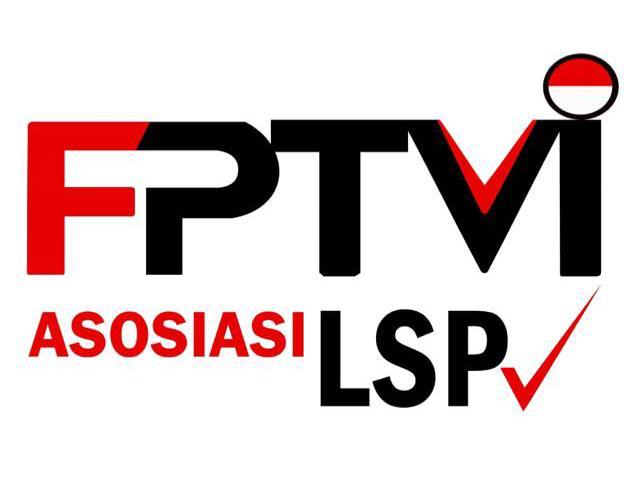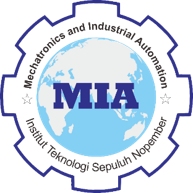The Effect of Aeration on Aerobic Biofilter Using Polyethylene Terephthalate Media for Chicken Slaughterhouse Liquid Waste
Abstract
Chicken Slaughterhouse is one of the industries that process live chickens into ready-to-eat chicken meat products. Many chicken slaughterhouses still need liquid waste treatment technology and directly discharge it into the aquatic environment. RPA liquid waste has a high organic content that will cause environmental pollution with unpleasant odors and decay. This study uses an aerobic wastewater treatment method by utilizing aerobic microorganisms in wastewater that are attached to biofilter media to form biofilms. This study aims to reduce the concentration of COD, BOD, TSS, and ammonia and change the pH value of RPA liquid waste with aerobic biofilter treatment using honeycomb media from Polyethylene Terephthalate and to get the best aeration flow rate to reduce the concentration of pollutants from the aerobic biofilter reactor. In this study, the residence time and the addition of air discharge in the aeration process are varied. The results of this study show that there has been a decrease in the concentration of COD, BOD, TSS, and ammonia and changes in pH values following PERMENLHK No 5 of 2014 concerning the quality standards of slaughterhouse wastewater with the best aeration flowrate recommendation is 15 liters/minute.
Keywords
Full Text:
PDFReferences
E. Novita, U. Jember, H. A. Pradana, and U. Jember, “Pengendalian Potensi Pencemaran Air Limbah Rumah Pemotongan Ayam Menggunakan Metode Fitoremediasi dengan Beberapa Jenis Tanaman Air (Komparasi antara Tanaman Eceng Gondok, Kangkung,” December, 2021, doi: 10.32530/agroteknika.v4i2.110.
M. Sholihah, A. E. Afiuddin, and M. L. Ashari, “Rancang Bangun Teknologi Pengolahan Limbah Cair Domestik ( IPAL MINI ) pada Kegiatan Asrama Mahasiswi,” Conf. Proceeding Waste Treat. Technol., no. 2623, pp. 165–170, 2014.
M. M. Apelabi, R. Rasman, and R. Rostina, “Pengaruh Proses Biofilter Aerob Anaerob Terhadap Penurunan Kadar Bod Pada Limbah Cair Rumah Tangga (Studi Literatur),” Sulolipu Media Komun. Sivitas Akad. dan Masy., vol. 21, no. 1, p. 104, 2021, doi: 10.32382/sulolipu.v21i1.2089.
Vitricia, C. Dwiratna, and H. Setyobudiarso, “Efektivitas Metode Aerasi Bubble Aerator Dalam Menurunkan Kadar Bod Dan Cod Air Limbah Rps Laundry Kota Malang,” vol. 1, p. 2, 2022.
A. D. Radityaningrum and M. N. Kusuma, “Perbandingan Kinerja Media Biofilter Anaerobic Biofilter Dalam Penurunan Tss, Bod, Cod Pada Grey Water,” Jukung (Jurnal Tek. Lingkungan), vol. 3, no. 2, pp. 25–34, 2017, doi: 10.20527/jukung.v3i2.4024.
M. Al Kholif, M. Rohmah, I. Nurhayati, D. Adi Walujo, and D. Dian Majid, “Penurunan Beban Pencemar Rumah Potong Hewan (RPH) Menggunakan Sistem Biofilter Anaerob,” J. Sains Teknol. Lingkung., vol. 14, no. 2, pp. 100–113, 2022, [Online].Available:https://journal.uii.ac.id/JSTL/article/view/23979
M. Filliazati, I. Apriani, and T. A. Zahara, “Pengolahan Limbah Cair Domestik Dengan Biofilter Aerob Menggunakan Media Bioball Dan Tanaman Kiambang,” J. Teknol. Lingkung. Lahan Basah, vol. 1, no. 1, pp. 1–10, 2013, doi: 10.26418/jtllb.v1i1.4028.
N. I. Said and K. Utomo, “Pengolahan Air Limbah Domestik Dengan Proses Lumpur Aktif Yang Diisi Dengan Media Bioball,” J. Air Indones., vol. 3, no. 2, pp. 160–174, 2018, doi: 10.29122/jai.v3i2.2337.
M. Irfa, G. Yoedihanto, and D. Marsono, “Pengaruh Rasio Media , Resirkulasi Dan Umur Dalam Pengolahan Limbah Organik the Effect of Media Ratio , Recirculation and Sludge Age At Aerobic Hybrid Reactor in Organic Wastewater Treatment,” pp. 73–78, 1997.
B. Ji, H. Wang, and K. Yang, “Nitrate and COD removal in an upflow biofilter under an aerobic atmosphere,” Bioresour. Technol., vol. 158, pp. 156–160, 2014, doi: 10.1016/j.biortech.2014.02.025.
J. B. Butler, I. W. Budiarsa Suyasa, and I. M. S. Negara, “Penurunan Cod, Bod, Tss, Amonia Dan Koliform Air Limbah Rumah Potong Hewan Dengan Biofilter Aerobic Fixed-Bed Reactor Dan Klorinasi,” J. Kim., vol. 16, no. 2, p. 174, 2022, doi: 10.24843/jchem.2022.v16.i02.p07.
W. S. Made Arsawan, I Wayan Budiarsa Suyasa, “Pemanfaatan Metode Aerasi Dalam Pengolahan Limbah Berminyak,” Ecotrophic, vol. 2, no. 2, pp. 1–9, 2007.
D. Rahayu and N. Ratni, “Limbah Rumah Potong Hewan dengan Proses Biofilter Anaerob-Aerob Menggunakan Media,” J. Purifikasi, vol. 19, no. 1, pp. 25–36, 2015.
N. I. Said and Firly, “Uji Performance Biofilter Anaerobik Unggun Tetap Menggunakan Media Biofilter Sarang Tawon Untuk Pengolahan Air Limbah Rumah Potong Ayam,” J. Air Indones., vol. 1, no. 3, pp. 289–303, 2005, doi: 10.29122/jai.v1i3.2357.
H. A. Mustamin, R. P. Larasati, and K. Sumada, “Studi Kesesuaian Mikroorganisme terhadap Pengolahan Limbah Cair Industri,” ChemPro, vol. 1, no. 02, pp. 45–52, 2020, doi: 10.33005/chempro.v1i2.63.
T. A. Daroini and A. Arisandi, “Analisis Bod (Biological Oxygen Demand) Di Perairan Desa Prancak Kecamatan Sepulu, Bangkalan,” Juvenil, vol. 1, no. 4, pp. 558–567, 2020, [Online]. Available: http://doi.org/10.21107/juvenil.v1i4.9037
A. Aziz, F. Basheer, A. Sengar, Irfanullah, S. U. Khan, and I. H. Farooqi, “Biological wastewater treatment (anaerobic-aerobic) technologies for safe discharge of treated slaughterhouse and meat processing wastewater,” Sci. Total Environ., vol. 686, pp. 681–708, 2019, doi: 10.1016/j.scitotenv.2019.05.295.
S. Pahlavanzadeh, K. Zoroufchi Benis, M. Shakerkhatibi, A. Karimi Jashni, N. Taleb Beydokhti, and S. Alizadeh Kordkandi, “Performance and kinetic modeling of an aerated submerged fixed-film bioreactor for BOD and nitrogen removal from municipal wastewater,” J. Environ. Chem. Eng., vol. 6, no. 5, pp. 6154–6164, 2018, doi: 10.1016/j.jece.2018.09.045.
DOI: http://dx.doi.org/10.12962%2Fj23378557.v9i3.a18211
Refbacks
- There are currently no refbacks.
This work is licensed under a Creative Commons Attribution 4.0 International License. IPTEK The Journal of Engineering published by Pusat Publikasi Ilmiah, Institut Teknologi Sepuluh Nopember.
Please contact us for order or further information at: email: iptek.joe[at]gmail.com Fax/Telp: 031 5992945. Editorial Office Address: Pusat Riset Building 6th floor, ITS Campus, Sukolilo, Surabaya 60111, Indonesia.








